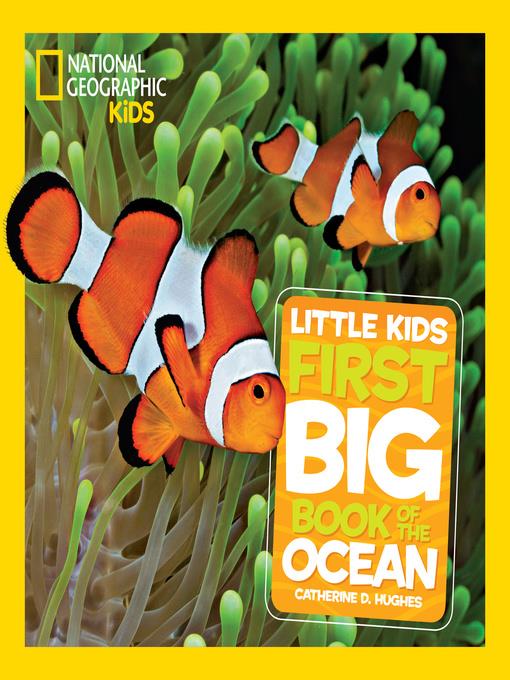
National Geographic Little Kids First Big Book of the Ocean
National Geographic Kids & Yellow Border Design
فرمت کتاب
ebook
تاریخ انتشار
2016
Lexile Score
740
Reading Level
3-4
ATOS
4.4
Interest Level
4-8(MG)
نویسنده
Catherine D. Hughesناشر
Disney Book Groupشابک
9781426318528
کتاب های مرتبط
- اطلاعات
- نقد و بررسی
- دیدگاه کاربران
نقد و بررسی

September 23, 2013
This addition to the First Big series, which introduces wild animals and scientific concepts, focuses on ocean habitats. Large type, crisp photographs of animals in action, informative sidebars and bursts, and interactive prompts all help young readers easily follow along. Each of the four chapters is devoted to one of the world’s oceans; a half dozen to a dozen animals are spotlighted within each chapter, including Pacific orcas and the giant oceanic manta ray of the Indian Ocean, among many others. Throughout, the straightforward text underscores the idea of the ocean’s diversity: “There are about 5,000 species of sponges. They come in many shapes, colors, and sizes.” With subjects ranging from perennial favorites like dolphins to critical links along the ocean food chain such as Antarctic krill, Hughes delivers a solid resource to add to a child’s learning library. Ages 4–8.

December 1, 2013
PreS-Gr 3-This introduction to representative marine species is arranged by the Pacific, Atlantic, Indian, and Arctic Oceans. A fact box for each animal briefly describes its home, size, and food; the sounds it makes; and how many babies it has each year. The vocabulary contains different reading levels, ranging from "phytoplankton," "zooplankton," and "crustaceans" to "pod," "kelp," and "prey." The animals' sizes are never expressed numerically, but only as interesting comparisons, such as "long as a man's foot" (coral) or "about as long as a Chihuahua, a little dog" (Atlantic puffin). Close-up, full-color photographs illustrate each species, and childlike curvy arrows point out important features-a fin (of a great white shark), baby beluga in the Arctic Ocean, and "cleaner station" for manta rays in the Indian Ocean. The narrative includes a summary of "10 Cool Things To Remember About The Ocean!" (#5 "Everything that lives on Earth including you, depends on THE OCEAN"); two pages of parent tips (crafts and activities to reinforce the leaning process); and a map that lists the animals described in each region. This colorful text will be fun and interesting for browsers and casual learners alike.-Frances E. Millhouser, formerly at Fairfax County Public Library, VA
Copyright 2013 School Library Journal, LLC Used with permission.

Starred review from September 15, 2013
Equally suitable for quick dips or lengthy dives, this gallery of ocean dwellers will attract schools of newly fledged readers. Grouping her profiles by ocean (but noting wider distribution where appropriate), Hughes introduces 33 creatures or types of creature. These range from krill to blue whale, stony coral to Atlantic puffin and "deepsea anglerfish." Coupled to big, bright nature photos, the captions, fact boxes and short passages of narrative present accurate, basic information about size, range, diet, common habitat, physical characteristics and even sounds in simply phrased, easily digestible morsels printed in several sizes and weights of type. The author uses several reinforcement techniques to help readers retain what they've learned. She repeats terms like "sessile" and "phytoplankton" that were defined in context earlier and asks questions that draw connections or spark reflection: "What is the tiniest kind of food that you eat?" Moreover, she closes with a spread of enrichment activities, a couple of websites for further information and an easy review quiz. Substantial but never heavy, this is likely to float to the top of any young naturalist's reading list. (glossary, index) (Nonfiction. 6-9)
COPYRIGHT(2013) Kirkus Reviews, ALL RIGHTS RESERVED.

























دیدگاه کاربران